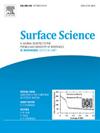“Single-atom” catalysis: An opportunity for surface science
IF 2.1
4区 化学
Q3 CHEMISTRY, PHYSICAL
引用次数: 0
Abstract
Over the past decade, extensive research into ``single-atom'' catalysts (SACs) has revealed that the catalytic behavior of metal adatoms is highly dependent on how they interact with their support. A strong dependence on the local coordination environment has led to comparisons with metal-organic complexes, and there is growing excitement about the potential to fine-tune SACs by controlling the adsorption geometry. The rise of computational screening to identify the optimal support/metal combinations underscores the need for rigorous benchmarking of theoretical methods, to validate realistic geometries, mechanisms, and the impact of adsorption on stability and catalytic activity. The surface science approach is particularly well-suited for this task because it allows to precisely determine the geometry of the metal atom and interpret its catalytic behavior. Moreover, the effects of temperature and molecular adsorption on the model catalysts stability can be studied in isolation, and conclusions drawn from UHV studies tested in increasingly common near-ambient pressure and electrochemical setups. This perspective highlights recent breakthroughs and specific systems—including metal oxides, metal-organic frameworks, and carbon nitrides—where insights from surface science experiments can significantly advance understanding in this rapidly evolving field.

“单原子”催化:表面科学的机会
在过去的十年中,对“单原子”催化剂(SACs)的广泛研究表明,金属辅助原子的催化行为高度依赖于它们与载体的相互作用。对局部配位环境的强烈依赖导致了与金属有机配合物的比较,并且通过控制吸附几何来微调SACs的潜力越来越令人兴奋。随着计算筛选技术的兴起,确定最佳载体/金属组合强调了对理论方法进行严格基准测试的必要性,以验证实际的几何形状、机制以及吸附对稳定性和催化活性的影响。表面科学方法特别适合这项任务,因为它可以精确地确定金属原子的几何形状并解释其催化行为。此外,温度和分子吸附对模型催化剂稳定性的影响可以单独研究,并且可以在越来越常见的近环境压力和电化学设置中对特高压研究得出的结论进行测试。这一观点强调了最近的突破和特定系统-包括金属氧化物,金属有机框架和碳氮化物-表面科学实验的见解可以显着推进对这一快速发展领域的理解。
本文章由计算机程序翻译,如有差异,请以英文原文为准。
求助全文
约1分钟内获得全文
求助全文
来源期刊

Surface Science
化学-物理:凝聚态物理
CiteScore
3.30
自引率
5.30%
发文量
137
审稿时长
25 days
期刊介绍:
Surface Science is devoted to elucidating the fundamental aspects of chemistry and physics occurring at a wide range of surfaces and interfaces and to disseminating this knowledge fast. The journal welcomes a broad spectrum of topics, including but not limited to:
• model systems (e.g. in Ultra High Vacuum) under well-controlled reactive conditions
• nanoscale science and engineering, including manipulation of matter at the atomic/molecular scale and assembly phenomena
• reactivity of surfaces as related to various applied areas including heterogeneous catalysis, chemistry at electrified interfaces, and semiconductors functionalization
• phenomena at interfaces relevant to energy storage and conversion, and fuels production and utilization
• surface reactivity for environmental protection and pollution remediation
• interactions at surfaces of soft matter, including polymers and biomaterials.
Both experimental and theoretical work, including modeling, is within the scope of the journal. Work published in Surface Science reaches a wide readership, from chemistry and physics to biology and materials science and engineering, providing an excellent forum for cross-fertilization of ideas and broad dissemination of scientific discoveries.
 求助内容:
求助内容: 应助结果提醒方式:
应助结果提醒方式:


